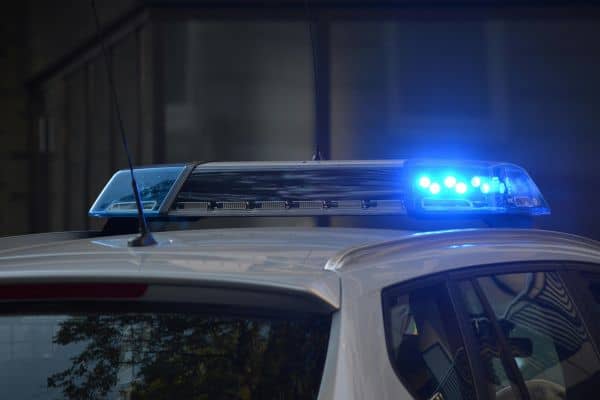What’s the Penalty for a Hit and Run With No Injuries?

A hit-and-run is a serious crime in South Carolina, even if no one gets hurt. If you leave the scene of a car accident without stopping and exchanging information, you could face pretty hefty penalties.
In this blog, our criminal defense lawyers will break down South Carolina’s hit-and-run laws, what kind of trouble you could be in if you leave the scene, and what you should do if you find yourself in this sticky situation.
What You Need to Know About Hit and Run Laws
If you’re involved in an accident, South Carolina traffic laws require you to do a few things.
- Stop immediately: You must stop your vehicle at the accident scene or as close to it as possible without blocking traffic.
- Share your information: You must give your name, address, vehicle registration number, and driver’s license to the other people involved in the accident.
- Help anyone who’s hurt: If someone is injured, you must provide reasonable assistance, like calling for medical help or taking the injured person to the hospital if needed.
- Report the accident: you must report the incident to the nearest police station or highway patrol office as soon as possible if it involves injury, death, or property damage over $1,000.
The state could bring hit-and-run charges against you when you don’t follow these rules, even if no one was hurt.
Consequences of Leaving a No-Injury Car Accident
Leaving the scene of an accident without doing your legal duty is a big deal in South Carolina. The penalties you face for a hit and run with no injuries depend on the details of the incident and whether you’ve done it before.
Misdemeanor Hit and Run Charges
- First offense: If it’s your first hit and run, the state could charge you with a misdemeanor. You might have to pay a fine between $100 and $5,000 or spend up to one year in jail.
- Second offense: If you get caught for a hit and run again within ten years of your first offense, you could face a fine of $300 to $5,000 or up to one year in jail.
- Suspended driver’s license: Besides fines and possible jail time, the court might also suspend your driver’s license for a set period.
What affects the severity of the penalties
- Prior offenses: You could face stricter penalties if convicted of other hit-and-runs or traffic violations.
- The circumstances of the incident: Things like how much property damage you caused, if you were under the influence of drugs or alcohol, and how well you cooperated with law enforcement after getting caught can all impact punishment severity.
Hit and Run Consequences That Go Beyond the Courtroom
The fallout from a hit-and-run conviction doesn’t stop at legal penalties.
You might also face:
- Higher insurance rates: A hit-and-run conviction can cause your car insurance premiums to go through the roof, as insurers see you as a risky driver.
- Trouble getting car insurance in the future: Some insurance companies might refuse to cover you because of your hit-and-run record.
- Problems with job opportunities: A hit-and-run conviction can show up on your criminal record, making it harder to get certain jobs, especially ones that involve driving or positions of trust.
How Hit and Run Penalties Stack Up in South Carolina
The South Carolina courts take leaving the scene of an accident very seriously, and offenders can face significant legal repercussions.
It’s important to note that these penalties are specific to hit-and-run accidents with no injuries. If the accident results in bodily injury or death, the consequences become much more severe, and you could be facing felony charges.
Compared to other states, South Carolina’s hit and run penalties fall in the middle of the spectrum. While not as lenient as some states, such as Kentucky, South Carolina’s consequences are less severe than those in California or Florida.
Regardless of how our state’s penalties compare to others, you must remember that leaving the scene of an accident is never acceptable.
By understanding the hit-and-run laws and the potential consequences of fleeing the scene, you can make an informed decision when you hit someone and hopefully do the right thing by stopping and reporting.
Fighting Back Against Hit and Run Charges
Although it’s always best to follow the law and stop after an accident, some defenses might work against hit-and-run charges:
- You didn’t know about the accident: This could be a defense if you genuinely had no idea that you hit another vehicle or object.
- You couldn’t stop for reasons out of your control: If a medical emergency or other extreme event kept you from stopping at the scene, the courts might consider the circumstances.
- Wrong person accused or false allegations: If you were wrongly charged with a hit and run or there was a case of mistaken identity, these factors could work in your favor.
But remember, the defenses above aren’t guaranteed to work in your favor, and it’s always best to talk to a skilled criminal defense attorney when you’re up against hit-and-run charges.
Why You Need a Lawyer on Your Side
Having a knowledgeable attorney in your corner is key when you’re accused of a hit-and-run.
A seasoned lawyer can:
- Safeguard your rights: Your legal counsel will protect your constitutional rights throughout the process.
- Guide you through the maze of hit-and-run laws: These cases can involve tricky legal issues, and a criminal defense lawyer can help you understand everything.
- Work to reduce your penalties: Your advocate will minimize the consequences you face, possibly by negotiating for lesser charges or alternative sentencing options.
What to Do After a Hit-and-Run Accident
Whether you’re the victim or the at-fault driver in a hit-and-run accident, there are specific steps you should take:
- Collect evidence and witness information: If you can, snap photos of the damage, the scene, and any personal injuries. Get contact info from witnesses who saw what happened.
- Call the police: Call law enforcement to report the accident and give them any information you have.
- Contact your insurance company: Inform your insurer about the incident and give them the necessary details.
The Role of Technology in Catching Hit-and-Run Drivers
As technology advances, law enforcement agencies increasingly rely on various tools to investigate and solve hit-and-run cases.
Some of these technologies include:
Surveillance cameras
Many cities and businesses have installed high-quality security cameras that can capture footage of hit-and-run accidents. This video evidence can be crucial in identifying the at-fault vehicle and driver.
Automatic license plate readers (ALPRs)
These devices use cameras and software to scan and record the license plates of passing vehicles. If an ALPR captures a hit-and-run vehicle’s license plate, it can provide a valuable lead for investigators.
Social media
Police often use social media platforms to share information about hit-and-run accidents and solicit tips from the public. Sometimes, the at-fault driver may even incriminate themselves by posting about the incident online.
Forensic analysis
Investigators can use advanced forensic techniques to examine evidence left at the scene, such as paint chips, tire marks, or debris. This evidence can help identify the make and model of the vehicle involved in the hit-and-run.
As these technologies evolve, they will likely play an increasingly important role in identifying hit-and-run drivers and charging them with the appropriate crimes.
Don’t Leave the Scene of an Accident: Protect Yourself and Others
Fleeing the scene of an accident is a serious offense in South Carolina, even when no one gets hurt.
The penalties for a hit-and-run can include fines, jail time, license suspension, and long-term consequences for insurance rates and job prospects.
Okoye Law’s hit-and-run attorneys understand the stress and uncertainty of hit-and-run charges. We’re here to give you the legal representation you need during this challenging time. Let us fight for your rights and work towards the best possible outcome for your case.
Contact us today to learn how we can help.



